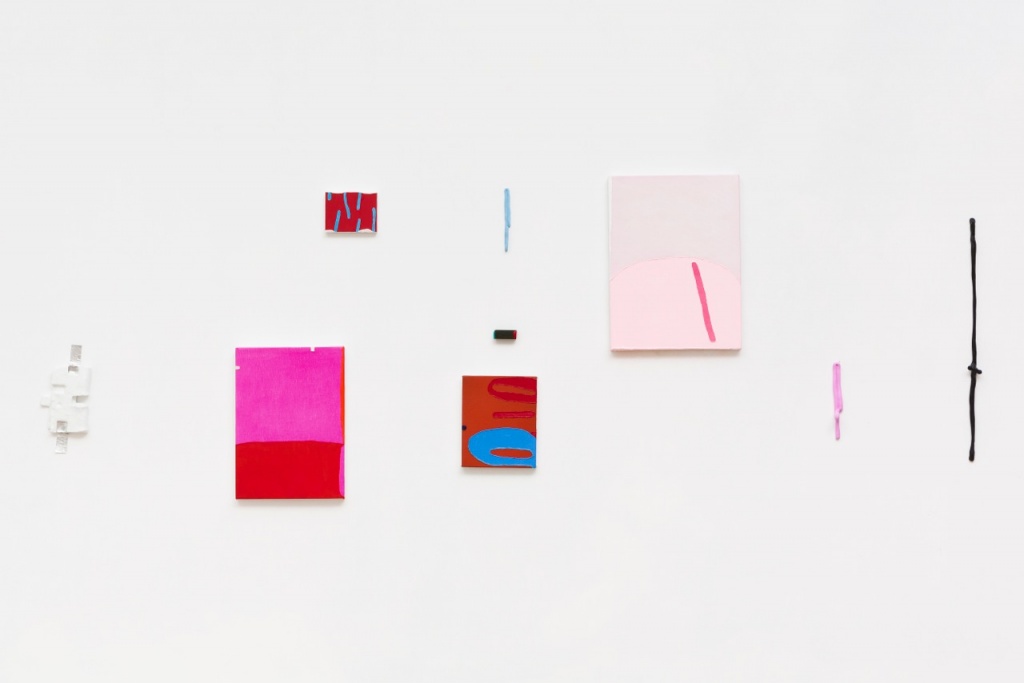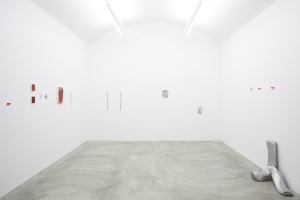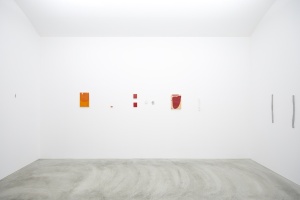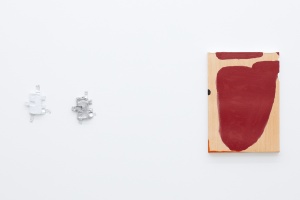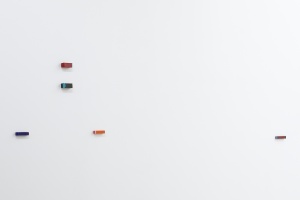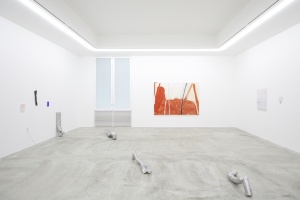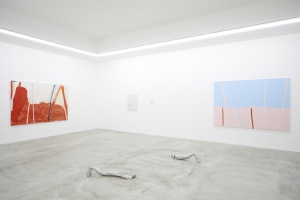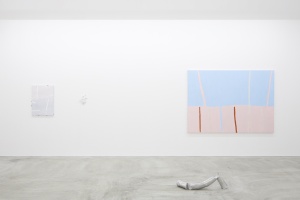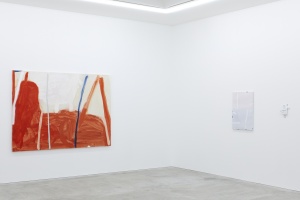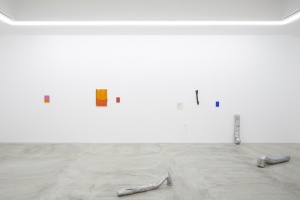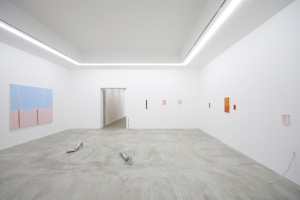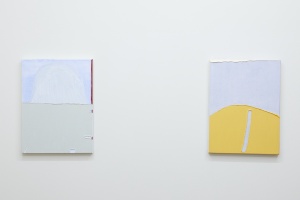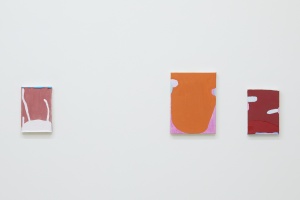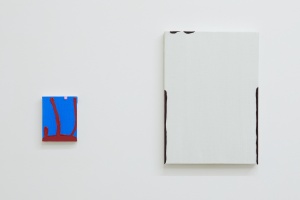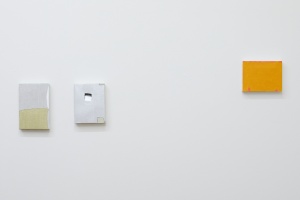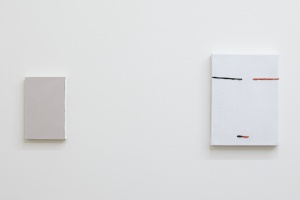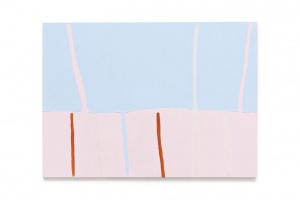Brazilian artist Paulo Monteiro creates paintings, drawings, and sculptures in minimal yet richly nuanced forms. He is one of the most prominent contemporary artists in Brazil. He held a large-scale survey show at the Pinacoteca do Estado de Sao Paulo in 2008, and in 2014 20 of his works were included in the permanent collection of MoMA. This is his first solo exhibition in Japan and will be held concurrently with an exhibition at MISAKO & ROSEN.
[About the Work]
Monteiro’s work is produced through the interrelations among painting, drawing, and sculpture, which complement each other. In a general sense, there are obvious differences between a vividly-colored oil painting and a sculpture made with bronze, yet the sense of difference almost disappears as we get closer to the works.
[Sculpture – Gravity, Movement, and Change]
Gravity is an important element in Monteiro’s sculpture. By displacing the materials and cutting a sense of movement into them, hard materials such as bronze or lead start to seem to wind, swell, and undulate just as if they were made of a viscous material. They may even evoke senses of fragility and ephemerality.
For example, a work using aluminum in a form like a thin rope was situated lightly on the wall, looking as if it gained its own body and were dancing classical ballet. By contrast, Monteiro treats light materials such as felt as if they had rigidity and gravity, giving them a sense of being distorted. It seems as if we can overhear the delicate ongoing dialogues between the work and the gravity of their materials, embodying a never-ending process of change. The artist seems to suggest the design of movement. With elements of coincidence and the incidental nature of movement, Monteiro’s sculptures appear to be dramatic and even joyful.
In recent years Monteiro has been using industrial materials and consumer goods such as ropes, tree stumps, snippets of paper and fabric, tape, cardboard, nails, mortar, and aluminum for his sculptures. In his work materials do not exist simply as materials but as subject matters. He does not create surface in the work, but reveals to the utmost its materiality.
[Painting – Materiality]
Most of Monteiro’s paintings are monochromatic and are covered by a thick layer of paint that takes up the entire surface of the canvas. Yet he also makes a part of thin layer by moving paint from the thick layer with the brush, so that lines emerge from another color plane underneath. This slight movement and unevenness of the surface makes the paint emerge as material, as he seems to attempt to deny the possibilities of symmetry and regularity on the canvas. Paint is not “color” in his work; it is “material”.
[Drawing – Immediacy]
Monteiro persistently explores the possibilities of “lines” in vertical format that he has used in his drawing for a long time. Although the process is marked by the infinite repetition of the same procedure and by restraint of formal varieties, each one of the drawings is the result of a unique confrontation with the act of drawing. This rawness and immediacy in his drawings are qualities that permeate a significant portion of Monteiro’s work. His lines are imperfect, traces of errors or hesitation representing an emotional dynamism and strongly impactful color combinations. In the end there is no absolute control over the result, although the artist establishes a set of rules.
[The World View of Monteiro’s Work – Space and Motion]
Throughout his paintings, drawings, and sculptures, Monteiro establishes his original visual language within which figurative and abstraction deftly intertwine with each other. He does not present works as individual objects. His works acquire mobility and a sense of spatial scale, creating close relationships among each other in which force, dynamism, and resonance takes place. They all present Monteiro’s world view together.
In recent years Monteiro has been interested in dance and practicing classical ballet. The sense of motion of materials is a key part of his work. That is not only based on the influence of Neo-Expressionism and Transavantgarde, but also based on the influence of dance.
Monteiro remarks on his sculptures:
The lead pieces that I made were a continuation of the wall work. I’d get a lump [of clay] in the shape of a mound, or something like Guston’s Back View painting, and made the thing remain vertical for as long as possible. When it was about to fall, I would squash it to deter the fall. But that alone was not enough, it was also necessary that the some figure should have emerged as a result of the action…
( Taisha Palhares and juliana Rego Ripoli “Pauro Monteiro” Sao Paulo: Casac Naify / Pinacoteca do Estado, 2009. p.201)
Monteiro is an artist of “motion”. The viewer can feel this unique rhythm and energy only through experiencing in person the worldview of his work.
[About This Exhibition]
On the title of the exhibition, Monteiro explains as follows:
I understand that two things can change a lot concerning the distance between them. It is something that we can see better putting two colors side by side and then change the distance between them with another color. But I’m also interested in distance in three-dimensional space. It changes a lot with the presence of other bodies in our vision field, so distances in a three-dimensional world have volume. And so distance has outside and inside. At first I felt this volume was so large then we are inside this! but know I realized that the volume change according to us. To our steps in a room. The volume of distance change all the time we walk in a room. We can see this but we can never feel totally inside this. I think the work I did for this show in Tokyo combines with this presence of outside distance, because I felt lost in the middle of many different things, so maybe I was more outside than inside the distance between them!
Monteiro’s first solo exhibition in Japan will feature a variety of works including new work; approximately 29 sculptures, 13 paintings, and 27 drawings will be presented at MISAKO & ROSEN, and 34 sculptures and 32 paintings will be on display at Tomio Koyama Gallery.
[Biography]
Paulo Monteiro was born in Sao Paulo, Brazil in 1961. He graduated from the Department of Visual Art, College of Fine Arts in Sao Paulo, where he currently lives and works. He started working as an artist in 1977, publishing in magazines drawings influenced by Robert Crumb amongst others. Monteiro started painting after being impressed by the work of Philip Guston in 1981, and became one of the founding members of “Casa 7” that aimed for a renaissance of Brazilian painting. In 1985 he took part in the Sao Paulo Biennial, by which time the group’s Neo-Expressionism was becoming mainstream within the art scene in Brazil. In 1986 he started creating sculptures using pipes and wood. He participated in the Sao Paulo Biennial with the lead pieces in 1994, and received the Bolsa Vitae de Artes Visuais Award in 1999. In 2000 he started painting again, and held a large survey show at the Pinacoteca do Estado de Sao Paolo in 2008. In 2014 MoMA acquired 20 works by Monteiro.
He has shown extensively in Brazil and internationally. His work is included in numerous public collections including those of MoMa, the Museu de Arte Moderna de Sao Paulo, the Pinacoteca do Estado de Sao Paulo, and the Museu de Arte Comtemporania da Universidade de Sao Paulo.

